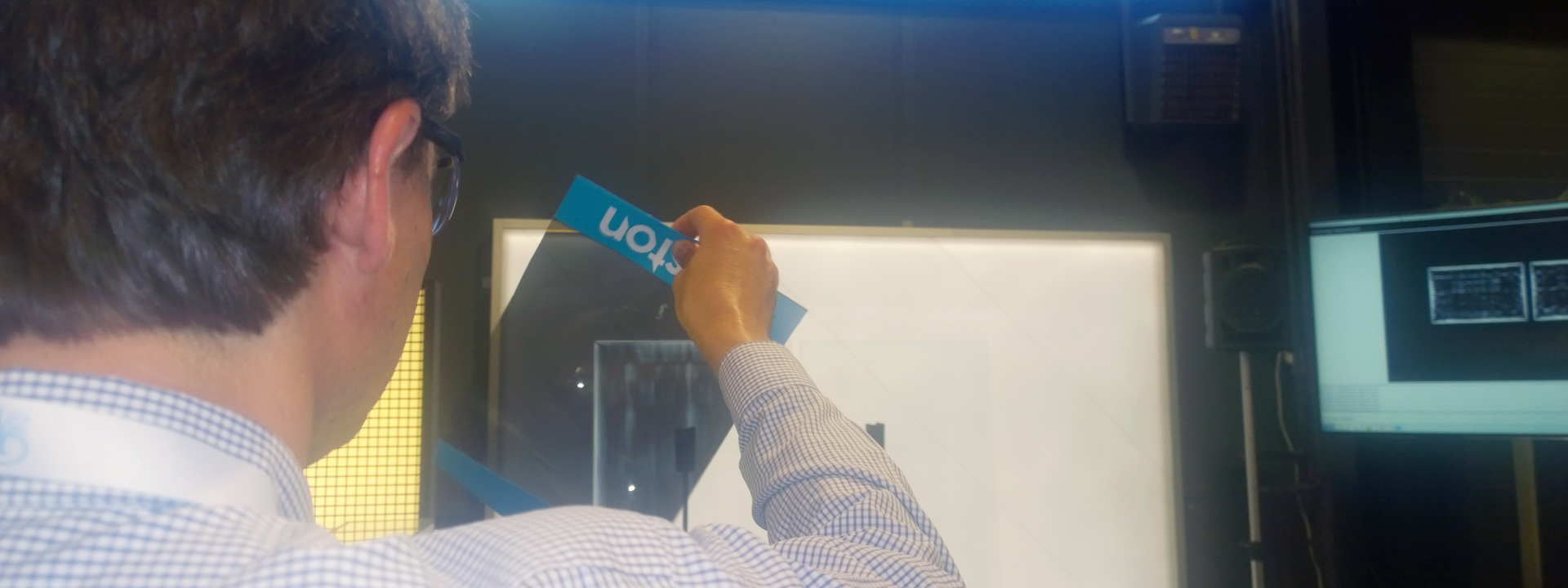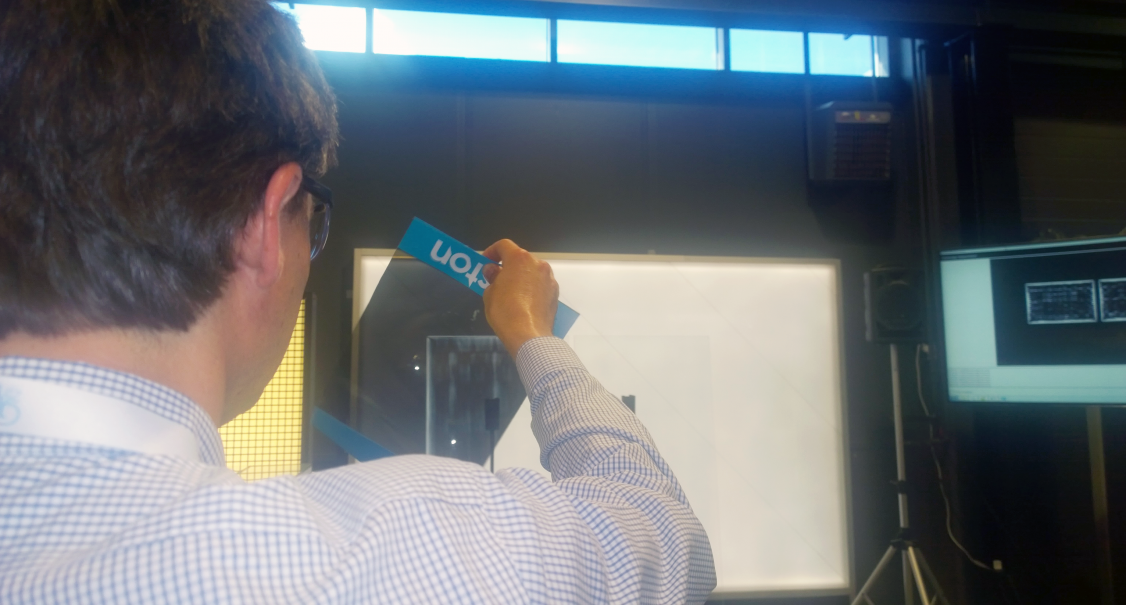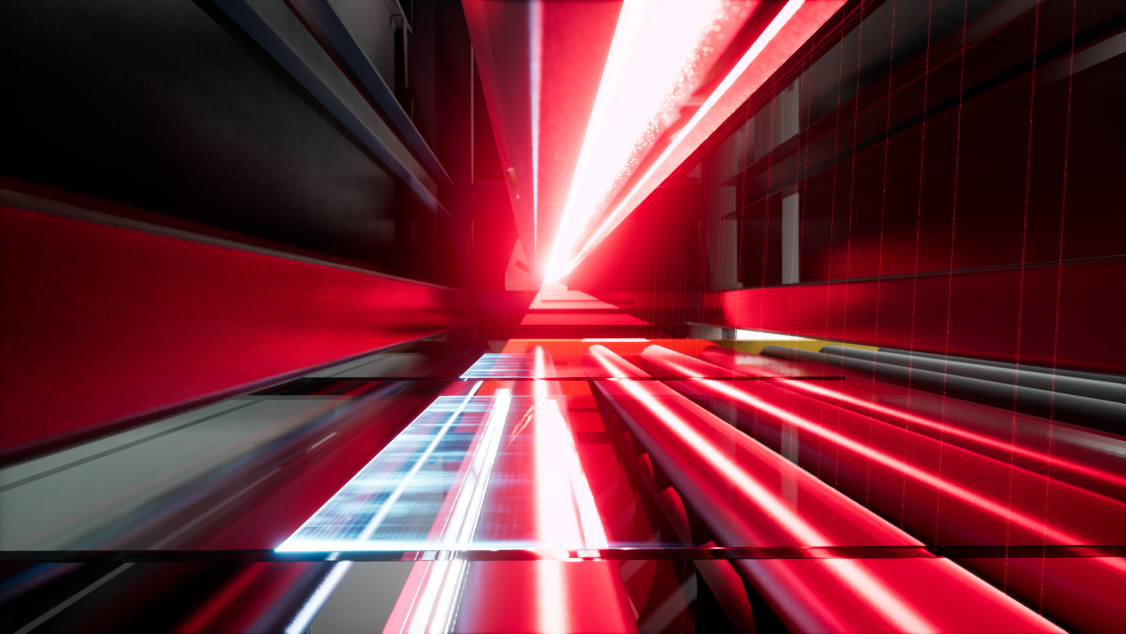
Ever looked at a building’s glass facade through polarized sunglasses? If so, you may have noticed patterning or spotting on it. This phenomenon is called anisotropy – or iridescence – and occurs in tempered glass as a result of heat treatment. Although there are still no standards for acceptable anisotropy levels in glass, some breakthrough in regard to the phenomenon has taken place recently.
When it comes to the visual quality of heat-treated glass, anisotropy has become more and more an acknowledged concern for glass processors, architects and their clients.
Since anisotropy is caused by stress differences in glass during the heating and cooling phases, it is inevitable in heat-treated glass. Customers, however, sometimes refuse to accept glass with anisotropy levels they feel are too high, making the phenomenon an issue for glass processors as well.
To date, there are no standards when it comes to anisotropy. The intensity of strain patterns may vary from slightly visible under certain conditions to obvious under most conditions. Anisotropy can also appear in different kinds of patterns. And everyone has their own opinion about what looks good and what looks bad. So, acceptable levels differ from project to project. The prominence of anisotropy also depends on visual conditions surrounding the glass.
Seeing anisotropy is easy. All you need is a polarization filter, like the one in sunglasses, with polarized light coming through the glass. Measuring it, however, is much harder. How can you reliably measure something that has no standards?

The main problem is that anisotropy can be very different in different conditions, such as geographical location, time of year and time of day. Also, the “level of anisotropy” is very hard to quantify. It’s not like a roller wave, where a trained eye can evaluate the amount of roller wave just by looking at the glass. Anisotropy may present itself, for example, as vertical or diagonal lines in the glass, or as spots in the glass such as seen in the rear windows of cars. Then again, which one of these is best? Or worst? As long as a universal standard doesn’t exist, there’s no way to answer this question. Everyone has their own opinion – which means we may even need more than one method to evaluate anisotropy.
Having a unified evaluating method, or methods, would certainly make our lives easier. So, as we are slowly moving towards an anisotropy standard, what can be done in the meantime?
Let’s consider roller wave again as an example. Standards define certain limits for roller wave defects, but the limits are generally quite loose. In many cases, a glass that passes a standard can still be far from good aesthetically – again, subjectively speaking. This has led to a situation where tempered glass manufacturers set their own project- or customer-specific “standards” rather than relying solely on official standards. And even if official standards are used, supplier selection in many cases is based on the general quality of the end product a supplier provides.
See where I’m going with this? Anisotropy doesn’t affect the mechanical strength of glass, so it’s not a safety issue. Still, aesthetics are often the main rationale for using glass in a project and are also what is driving this discussion around anisotropy. Now that we have a method for scanning the anisotropy of each glass piece produced, there’s nothing stopping producers from agreeing on suitable levels of it with their customers. The important thing is that both parties understand how the evaluation of anisotropy depends on the system used – and also that currently there is no right or wrong way to do it.
In 2017, Glaston launched an online solution that is up to the challenge of visualizing and quantifying the level of anisotropy in heat-treated glass – iLooK Anisotropy. Scanning glass for anisotropy gives processors a new tool to continuously monitor quality, test mock-ups, experiment with machine settings and improve production methods. It allows for new improvements in the tempering process and raises the bar for customer satisfaction.

Switching older lines to the latest tempering lines is one solution for achieving evenness in heating and cooling. But there’s a lot that can be done with older lines as well, such as adjusting heating time and transfer time – or running shorter loads. By adding a single smart tool, glass processors can meet this new challenge.
Some years from now, the industry might finally come to an agreement on clear standards for anisotropy. The Glass Innovation Institute, for example, is aiming to develop some universal standards. When this happens, technology that ensures your processed glass meets standards will not be just a helpful tool – it will be a necessity.
Download a presentation Towards better anisotropy from GPD 2017 conference.
Für den Glastory-Newsletter anmelden
Wir beantworten Ihre Fragen zur Glasverarbeitung. Teilen Sie uns Ihre Herausforderungen mit und wir versprechen, unser Bestes zu tun, um Ihnen zu helfen.
Comments are closed.